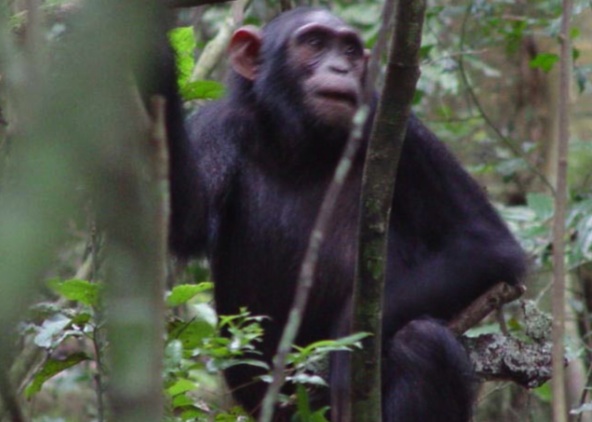We're open daily! View holiday hours
Science News
Chimpanzees and Play-Mothering
January 5, 2011

By Anne Holden
Since scientists like Jane Goodall started studying chimpanzees over 40 years ago, we humans have begun to realize that our primate brethren aren’t so different from us after all. They have a complex social structure, care for their young, and some in captivity have even learned sign language. Now recent observations have revealed another aspect of chimpanzee ‘culture’ that had previously been thought to be unique to young human girls: playing with dolls.
Primatologists have long seen chimpanzees in the wild playing with inanimate objects. Small stones, clumps of dirt, and sticks as playthings are a common sight in well-known communities like the Kanyawara chimpanzee community in Kibale National Park, Uganda. But experts like Richard Wrangham of Harvard University and Sonya Kahlenberg of Bates College in Maine thought there was more to this type of play than meets the eye. They reported their findings in the December 21st issue of Current Biology.
Wrangham and Kahlenberg focused on one particular behavior called “stick-carrying,” in which a chimp will carry a small stick or twig around with them for an extended period of time. The scientists noticed an uncanny similarity between the way that chimps were carrying these sticks and the way that young human girls carry dolls.
“We thought that if the sticks are being treated like dolls, females would carry sticks more than males do,” said Wrangham. When analyzing their years of data and observations, Wrangham and Kahlenberg found exactly that. Further, they found this behavior almost exclusive to young female chimps. Male chimps almost never played with sticks in this manner. According to Wrangham, “this is the first evidence of an animal species in the wild in which object play differs between males and females.”
Kahlenberg believes that these observations are akin to play mothering, similar to how girls play with dolls when they are young. “We have no records of adult females carrying sticks once they have given birth to their first offspring, which suggests a link with play mothering,” Kahlenberg told the Academy. Observations also suggested that young female chimps were learning this behavior not from their mothers but from each other.
The potential implications of these findings could revolutionize our understanding of chimpanzee behavior. According to Wrangham, this may very well be “the first case of a tradition maintained just among the young, like nursery rhymes among human children,” suggesting that chimpanzee traditions may be even more human than previously thought.
Anne Holden, a docent at the California Academy of Sciences, is a PhD trained genetic anthropologist and science writer living in San Francisco.
Photo: Sonya Kahlenberg